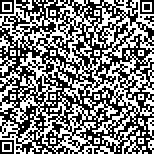| 引用本文: |
-
叶子葳,文建辉,卢德林,林清钰,陈春强,霍强,龙腾发.城市不同环境空间下PM2.5及表层土壤细菌群落结构差异性研究[J].广西科学,2024,31(3):523-531. [点击复制]
- YE Ziwei,WEN Jianhui,LU Delin,LIN Qingyu,CHEN Chunqiang,HUO Qiang,LONG Tengfa.Comparison on PM2.5 and Surface Soil Bacterial Community Structureamong Different Urban Environmental Spaces[J].Guangxi Sciences,2024,31(3):523-531. [点击复制]
|
|
| |
|
|
| 本文已被:浏览 395次 下载 340次 |

码上扫一扫! |
| 城市不同环境空间下PM2.5及表层土壤细菌群落结构差异性研究 |
|
叶子葳1,2, 文建辉3, 卢德林4, 林清钰1, 陈春强1, 霍强1, 龙腾发1
|
|
|
| (1.广西师范大学环境与资源学院, 广西 桂林 541004;2.崇左市广西花山景区管理委员会, 广西 崇左 532200;3.广西壮族自治区桂林生态环境监测中心, 广西 桂林 541199;4.广西师范大学后勤保障处, 广西 桂林 541004) |
|
| 摘要: |
| 为探究不同环境空间下空气微生物的组成特征和来源,在桂林城区与市郊选择8类典型的人类活动环境空间,分别采集大气细颗粒物(PM2.5)及表层土壤样本,利用高通量测序技术分析样本的细菌群落结构。结果表明:在不同环境空间下,PM2.5样本间的细菌群落结构差异性较小,表层土壤则表现出较明显的城区与市郊差异性,同一采样点的PM2.5与表层土壤也表现出较大的差异性。PM2.5与表层土壤中的主要细菌门为变形菌门(Proteobacteria)、放线菌门(Actinobacteria)、绿弯菌门(Chloroflexi)、拟杆菌门(Bacteroidetes)及厚壁菌门(Firmicutes),其相对丰度总和超过80%。各个环境空间中的微生物群落差异均表明人类活动对微生物群落的影响较大。此外,不同环境空间中的优势菌属也有所不同,这与环境的特点、细菌的生态功能相关。PM2.5中的优势菌属为异样根瘤菌属(Allorhizobium-Neorhizobium-Pararhizobium-Rhizobium)、假双头斧形菌属(Pseudolabrys)、甲基杆菌属(Methylobacterium)和不动杆菌属(Acinetobacter),而表层土壤中的优势菌属为鞘氨醇单胞菌属(Sphingomonas)、异常球菌属(Deinococcus)、马赛菌属(Massilia)和酸杆菌门(Acidobacteria)下的Subgroup_6属。 |
| 关键词: PM2.5 表层土壤 细菌群落结构 来源分析 高通量测序 |
| DOI:10.13656/j.cnki.gxkx.20240910.013 |
| 投稿时间:2023-07-27修订日期:2023-08-31 |
| 基金项目:国家自然科学基金项目(51968007)资助 |
|
| Comparison on PM2.5 and Surface Soil Bacterial Community Structureamong Different Urban Environmental Spaces |
|
YE Ziwei1,2, WEN Jianhui3, LU Delin4, LIN Qingyu1, CHEN Chunqiang1, HUO Qiang1, LONG Tengfa1
|
| (1.College of Environment and Resources, Guangxi Normal University, Guilin, Guangxi, 541004, China;2.Chongzuo Guangxi Huashan Scenic Area Management Committee, Chongzuo, Guangxi, 532200, China;3.Guilin Ecological Environmental Monitoring Center, Guilin, Guangxi, 541199, China;4.Logistics Support Service, Guangxi Normal University, Guilin, Guangxi, 541004, China) |
| Abstract: |
| To investigate the composition and sources of airborne microorganisms in different environmental spaces,this study collected atmospheric fine Particulate Matter (PM2.5) and topsoil samples from eight typical human activity environments in both urban and suburban areas of Guilin.High-throughput sequencing was employed to analyze the bacterial community structure.The results revealed that the bacterial community structure of PM2.5 samples varied little among different environmental spaces,while significant differences were observed in topsoil samples between urban and suburban areas.In addition,there were considerable differences between PM2.5 and topsoil samples from the same sampling points.The predominant bacterial phyla in both PM2.5 and topsoil were Proteobacteria,Actinobacteria,Chloroflexi,Bacteroidetes and Firmicutes,with the total relative abundance exceeding 80%.The microbial community differences between environmental spaces indicated substantial effects of human activities on these communities.Additionally,the dominant bacterial genera varied in different environments,correlating with environment characteristics and bacterial ecological functions.The dominant genera in PM2.5 samples included Allorhizobium-Neorhizobium-Pararhizobium-Rhizobium,Pseudolabrys,Methylobacterium and Acinetobacter,and those in topsoil samples comprised Sphingomonas,Deinococcus,Massilia and Subgroup_6 under Acidobacteria. |
| Key words: PM2.5 topsoil bacterial community structure source track high-throughput sequencing |
|
|
|
|
|